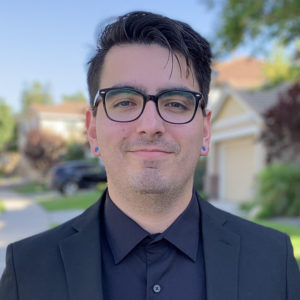As a first-generation college student, I never really entertained the possibility of working at a national laboratory. However, through the JGI-UC Merced internship program, I was able to collaborate with extraordinary scientists and gained exposure to new and different opportunities that could be available once I complete my PhD program.
As a graduate student, I am usually only surrounded by other graduate students and professors, hence my field of view can be quite narrow. Before this internship I only saw two paths forward after my PhD: academia or industry. Due to the friendly nature of everyone whom I spoke to at JGI, I was able to have a truly eye-opening internship experience.
My project this summer was focused on exploring a unique set of phages. Phages are a type of virus which infect bacteria. Unlike most phages, the set I looked at take on functions similar to plasmids. Plasmids are circular DNA found in bacteria which confer some benefit to their host. We’re interested in these intermediate phages with plasmid-like functions because we don’t too much about them, but they’re a part of the global virosphere, and knowing more about them may help to shed light onto the evolution of mobile genetic elements.
Along with my mentor, Stephen Nayfach, we searched for these intermediate phages by analysing their DNA sequences to determine matches to databases containing both plasmid and phage proteins. Once we identified predicted intermediate phages we sought to analyze their environmental distributions.
Initially, we set out to build a software tool that would allow us to automatically detect these intermediate phages. The tool works by taking DNA sequences and converting them into predicted protein sequences. These are then mapped to a database with annotated phage and plasmid sequences using local alignment methods.
The aligned sequences are then used to calculate scores called phage-plasmid quotient (PPQ) (Pfeifer et al). The calculated scores range from 0 to 1 with 0’s indicating a plasmid, and a 1 indicating a phage. Values in between 0 and 1 are predicted phage-plasmids. After determining predicted phage-plasmids from the sequences we performed an analysis on environmental distributions.
We looked at the top five environments which were separated into broad and more focused environments. We found that all three phages, phage-plasmids, and plasmids all have the same top biome type which is host associated: human environments. The biome types diverge after the top biome type. More research is being done based on these surprising results.

Distribution of the phage plasmid quotient (gPPQ) across circular metagenomic contigs. High gPPQ scores indicate sequences that mostly share genes with viruses, while sequences with low gPPQ scores mostly share genes with plasmids. Sequences with intermediate values (highlighted in gold) contain both phage-like and plasmid-like genes and were classified as putative phage-plasmids.

Environmental distribution of viruses (left), phage-plasmids (middle), and plasmids (right).
Unlike my internship research, my thesis work at UC Merced is on understanding the role that a certain population of immune cells play in the development of early autoimmune disease. Therefore, working with viral DNA sequences was not something that I was too familiar with, but this made my internship experience all the more fun.
It was an absolute privilege to be able to work with my mentor, Stephen Nayfach. With his help, I developed my skills in Python and now feel more confident in my coding abilities. The program also organized professional development opportunities and Stephen helped introduce me to scientists in different stages in their careers. Learning about their experiences working at the JGI and absorbing career-related advice is something that I will be forever grateful for.
Written by: Oscar Davalos and Stephen Nayfach
Davalos is a Molecular & Cell Biology graduate student at the University of California, Merced.
